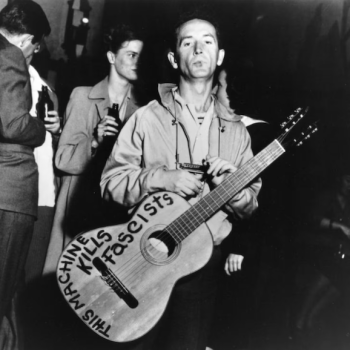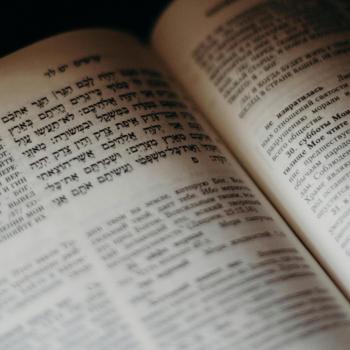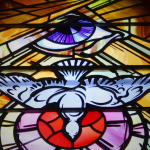 A quick book review on one of the most incredible books I’ve read in recent times.
A quick book review on one of the most incredible books I’ve read in recent times.
Torture and Eucharist by William T. Cavanaugh[1] is a remarkable work which every student and pastor would do well to read. His account of the horrific torture and oppression of the Pinochet regime in Chile is gripping and emotional in the spirit of Elie Wiesel’s Night. Cavanaugh is focused on the Catholic Church’s ecclesiology and self-perception which in the early years of the regime, was unable to respond as he believes it should have, but which later became the lone dissenting voice to this brutal military regime.
The book begins with a exploration of torture as a means of social control. Arguing that one should attempt to link the idea of torture with the idea of governance in the case of the Pinochet regime, Cavanaugh describes the practice of “disappearance” which became the hallmark of oppression in Chile. Disappearance became the euphemistic parlance for those who had been abducted for torture. The disappearances were sometimes simply random. 46% of those who were disappeared weren’t even politically active. But more often disappearances were aimed at those who were politically or socially active and considered in some way threatening to the regime. Those who were killed were seldom ever found. Those who were tortured seldom had any physical scar to witness to the brutality. Disappearance disallowed the church the martyrs it needed to resist the regime. In the dark early days there were only victims and emotional scars. The state literally possessed the “body” of its people.
Under the Pinochet regime, the point of the torture wasn’t to illicit information. The questions were themselves part of the method of torture. In most cases the torturers already knew the information they were asking about or didn’t really care about the answers. The point of the torture was to get them to enact the part of the enemy of the state and acting the part, they actually became the enemy which would serve to legitimize the authority of the state. Torturers didn’t want the victim to recant anything. They didn’t care if they signed a statement of confession to forbidden political activity. Torture forced the victims to act out the part of the regime’s enemies, to “take on the role of filth, confessing his lowliness,”[2] and in so doing justify the oppression of the government. The very act of torture was not meant to discipline enemies of the state, but to create enemies of the state and thereby legitimate the need for the brutal government. Enemies of the regime “are not so much punished as produced in the torture chamber.”[3]
Cavanaugh points out that the choice of torture is not random, for it is based in pain. The reality of pain has several profound effects on its victims. First it actively destroys language because pain is not something which can be expressed with descriptors. Those in severe pain are reduced to the inarticulate sounds of infancy…cries and shrieks. Through pain, the victim is forced to betray friends, beliefs, and all other social connections (unions, religion, etc.), ideologies under torture, then derided as a betrayer by the torturers. Through the fear of disappearance and pain, society began to lose its social connections. If one lived in fear that a neighbor might inform the government should they utter a criticism of the regime, or gather for prayer in their home, and that this could result in disappearance and torture, it is not difficult to see how social entities are broken down. Even those inclined to talk about what had happened had suffered such psychological trauma that they were unable to describe their own torture.
The end result was the total fragmentation of the society and the elimination of everything except atomized, fragmented individuals who had lost the ability to voice their pain, form connections with others and even the ability to feel. Isolated and alone, their only vision of the future was seen darkly through the lens of the regime. Fear gripped the entire society such that everyone severed any social connections that were not superficial. The net effect was the loss of any social body which could rival the regime, including the church.
Cavanaugh focuses on the Catholic ecclesiology which, under the leadership of Cardinal Silva and the theological influence of Frenchman Jacques Maratain, had ceded all authority to the government without even realizing it had done so. Authority was ceded because of a sort of anthropological “distinction of planes”[4] or a dualism which conceived of the “soul” as the property of the church but not the body. The realm of the soul was the churches area, which meant that the body was the property of the state. This division between the spiritual and the temporal sapped the church’s ability to resist the regime. The torture of the body had so fragmented society that the culture was left without any social body with enough size or power to actually speak out against the regime. Not even the church could fulfill this role.
Only later on during the regime, did the church begin to recover its ability to resist the power of the regime. Cavanaugh argues that it did so only when it broke with the ecclesiological distinction between spiritual and temporal and became the true body of Christ. The ability to recover the Eucharist as a bodily act was central to this new self-perception of the church. Cavanaugh perceives of torture and Eucharist as opposing sacraments. “Where torture is an anti-liturgy for the realization of the state’s power on the bodies of others, Eucharist is the realization of Christ’s suffering and redemptive body in the bodies of His followers.
Through a new understanding of Eucharist it became possible for the Chilean church to see that “Christians are the real body of Christ, and the Eucharist is where the church mystically comes to be.”[5] Through Eucharistic acts of defiance, the church began to exist again after a long disappearance. The Eucharist becomes the imagination of the church, or what Zizioulas calls a “memory of the future,”[6] which begins to enact the future reign of the kingdom here and now. In this way, Cavanaugh contends that the “church does not simply perform the Eucharist, the Eucharist performs the church,”[7] and builds a social body which is actually capable of resisting the regime.
Cavanaugh explores three practices of the church in Chile which came as a direct result of Eucharist that were particularly effective in resisting the politics of the regime. They were excommunication, the Vicariate of Solidarity, and the Sebastian Acevedo Movement against Torture. He discusses all three at length.
Excommunication never came for Pinochet in particular, but there was a general excommunication for all of those who were involved in torture.[8] The Vicaria’s actions provided services to 900,000 people in the first five years of its existence. It gave physical, bodily witness to torture, disappearance, hunger, poverty and oppression through legal, medical and other relief services. Through the solidarity of suffering and relief, the church began knitting back together a physical body of Christ. [9]
Sebastian Acevedo was a martyr who lit himself on fire outside a church after the disappearance of his two children. A passing priest with a tape recorder captured his final words, “I want the CNI to return my children. Lord, forgive them, and forgive me for this sacrifice.”[10] From this act of defiance, the Sebastian Acevedo movement organized clandestine protests. They would appear out of the crowds in busy areas, give voice to the oppressed, disperse information and say out loud the words no one dared to utter, then disappear again into the crowds. Through these protest the “disappeared” were transformed into martyrs because this gathered body spoke their names and made their suffering public. Cavanaugh says that the actions of the Sebastian Acevedo movement along with those of excommunication and the Vicariate of Solidarity actually function as Eucharist in that they unite their bodies with Christ in those acts.[11]
This book is an incredible challenge for the American evangelical. The dualistic ecclesiology he describes in Chile has its correlatives in the contemporary church. The temporal and spiritual distinctions are very common. We sing hymns like “I’ll Fly Away” longing for a place where “The Soul Never Dies,” without realizing that we have allowed a chasm to appear between the soul and the body. Have we designated the soul for the church and given the body to the state? I fear this is the case for many, perhaps even most. Not only that, but most evangelicals have reduced the Eucharist to a sort of commemorative ceremony, not an act of civil disobedience. The Eucharist commonly lacks the creative and constitutive power for which it was designed and instituted. We lack the symbolic sophistication to see the Eucharistic nature of acts performed in defiance of empire, colonialism, racism or injustice. Thus, these acts become rare and uncelebrated by most.
For the church in America today, I believe our task is to resist the oppressive regime of individualism, materialism and nationalism under which we live. We must not offer our bodies to a regime which feels it has the right to impose its way of life upon other civilizations through force. But the church has no vision for this. The church is mesmerized by these false idols and has allowed the dualism between body and spirit to go unchecked. I am haunted by this book and the idea which Cavanaugh presents herein. How will we ever find our identity as the true body of Christ and begin to resist our own culture of oppression? And if we do not, how dangerously close is the church to “disappearing” like so many victims of the Pinochet regime. These are the questions which our generation must address. I think Cavanaugh’s book can be extremely helpful in this regard.
[1] William T. Cavanaugh. Torture and Eucharist, Malden: Blackwell, 1998.
[2] Ibid., 31.
[3] Ibid., 31.
[4] Ibid., 151.
[5] Ibid., 212.
[6] Ibid., 234.
[7] Ibid., 235.
[8] Ibid., 256-7.
[9] Ibid., 267.
[10] Ibid., 273.
[11] Ibid., 277.
















